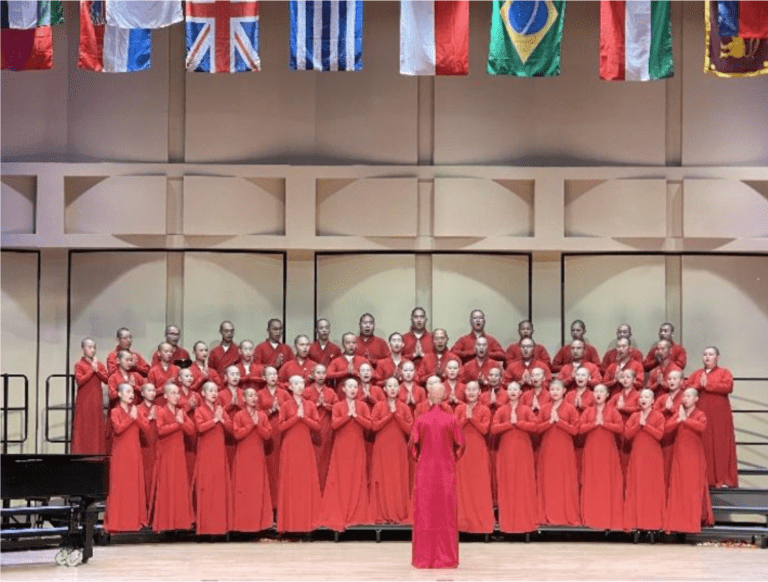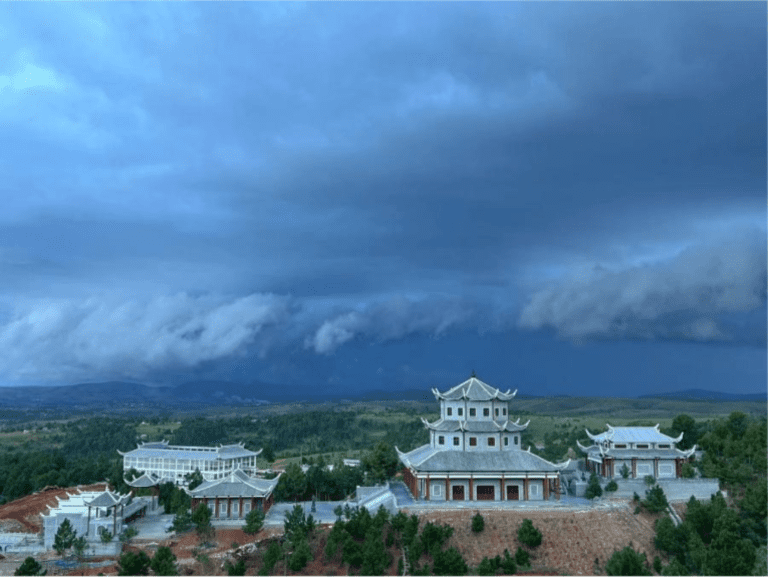
Introduction
The only Buddhist temple in Madagascar, the construction of the Xizu Monastery began in 2021 under the leadership of the 45th generation of the Rinzai Sect, led by Shih Wuluo, one of the great masters of the Zen school. It was built to internationalize Zen music and to promote traditional Chinese culture.
The temple is located on Mount Lok, Andranovelona, about 50 kilometers west of Antananarivo, the capital of Madagascar.
Zen Master Gokaku – advocates “becoming a Buddha through virtue” and “peace in the world through rituals and music”.
Teacher :
- Monk Jinghui, a closed disciple of Master Xuyun, is the 45th generation of the Linji Sect.
- He received the teachings from Venerable Guang Xuan, a closed disciple of Venerable Hong Yi, and is the 42nd generation of the Linji Drinking Cloud Sect.
- He also received the Dharma lineage of Zen Sect from the great accomplished living Buddha Shamgon of Tibetan Tantric Buddhism.
He has been :
- Abbot of Taiping Temple in Hubei Province.
- Abbot of Tiantai Monastery in Hong’an.
He is currently residing in Madagascar, Africa.
Origin
In 2019, with the deepening of the national “One Belt, One Road” strategy, as the 45th generation of the Linji Sect of Zen Buddhism, with the mission of making Zen Buddhism better serve the times, Zen Master Shih Wuluo, driven by a strong sense of responsibility and mission, traveled to Madagascar, Africa, at the age of 72, with a sickly body, which is the first time in the history of restoring Hongan Tiantai Temple and building the Three Zen Cultures. After restoring the 1400-year-old Hong’an Tiantai Temple and building the Sanzen culture, Zen Master Wuluo started a new and more arduous journey, and a large number of disciples voluntarily followed him to Madagascar to practice.
Africa is economically backward and lack of materials, but Zen Master Wuluo Shi saw that this is a pure land conducive to cultivation; Africa’s cultural development is lagging behind, and it is the borderland of Buddhism, but Zen Master Wuluo Shi felt that there is a greater need to nourish the dew of Buddhism and traditional Chinese culture; there is a language barrier and a different system here, but Zen Master Wuluo Shi saw an opportunity to enhance the international outlook of the Sangha and internationalize the practice of Zen music. In the eyes of the Zen master, everything unfavorable is also favorable, all in the heart.
Zen Master Gokaku is ready to serve the community by making the monastery a world center of meditation and by promoting modern Zen teachings. Summarizing the reasons why modern people are unable to cultivate with many traditional teachings, Zen Master Sak Gokaku has completely revolutionized the traditional method of meditation by adopting music meditation and incorporating the concept of loving and caring for people in his life. Zen Master Sak Gokaku envisions the monastery as a world-class meditation center, contributing to world peace and friendship among the people of the world.
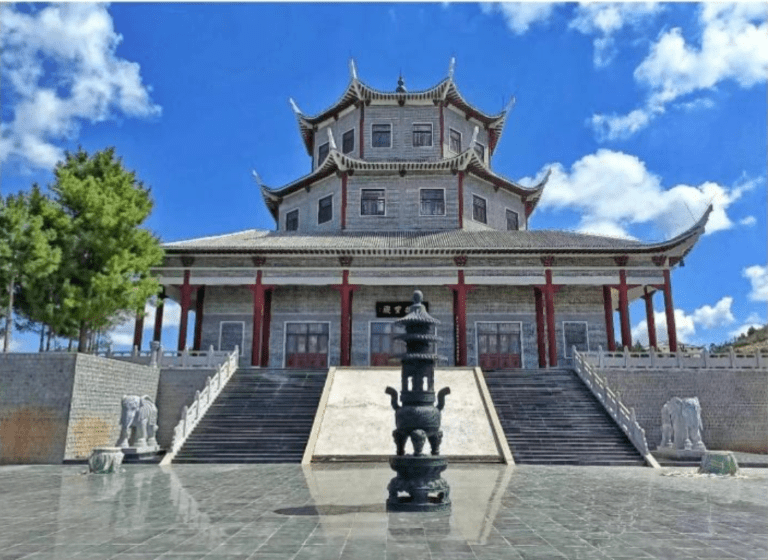
Current status
Zen Master Gokaku is leading a sangha of one hundred and fifty monks to deepen their roots in Madagascar and is actively building the Maga Monastery – Sizo Monastery.
The completed buildings are: Men’s Lodge, Lenten Hall, Women’s Lodge, Maharishi’s Hall, Heavenly King’s Hall, and Dawn Theater.
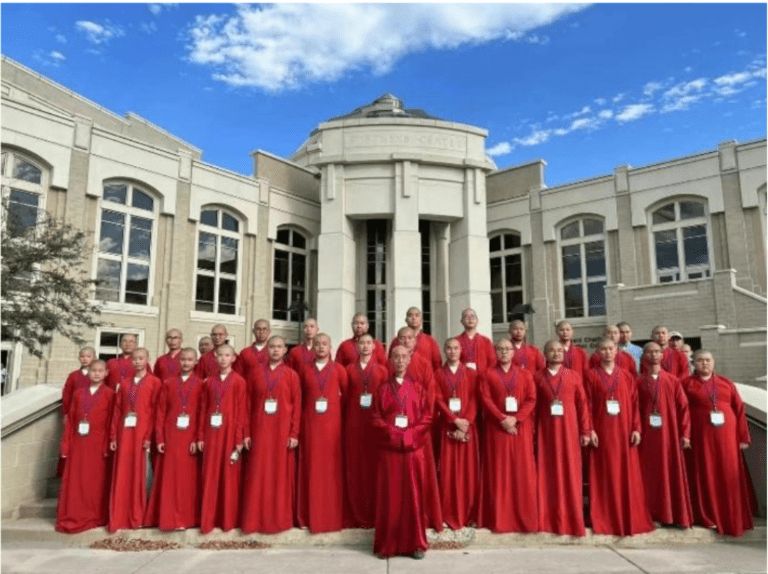
Tendaiji Guangxuan Art Troupe

The Guangxuan Art Troupe is a unique all-monk orchestra in the world. On weekdays, they study music in the form of
They study music as a means of meditation, and playing the zither and pipes is their practice.
By practicing the zither in a concentrated and gentle manner, the monks are able to silence all separations, attachments, and delusions internally, and to show compassion and love to all sentient beings and non-sentient beings externally.
About one hundred years ago, Venerable Hong Yi (commonly known as Li Shutong), one of the Four Great Monks of the Republic of China, began the exploration and practice of using art to promote Buddhism.
Today, 100 years later, Abbot Wule of Tiantai Temple, who is a disciple of Venerable Master Hongyi, put forward the cultivation method of “becoming a Buddha by virtue” and the idea of “three Zen – Zen music, Zen tea and Zen forest” as early as 1997 when he was the Abbot of Taiping Temple in Hong’an. When he was abbot of Taiping Temple in Hongan in 1997, he put forward the practice of “becoming a Buddha through virtue” and the idea of “three Zen – Zen music, Zen tea and Zen forest”, and began to practice music Zen, creating the prototype of Zen band.
- At the beginning of the construction of Tiantai Temple in 2004, Tiantai Zen music culture was vigorously developed.
- In March 2008, the Tiantai Zen Band was changed into an art troupe, and classes were formally opened to cultivate Buddhist art talents and to practice the concept of Zen music.
- In 2008, more than ten monks from Tiantai Temple formed the Guangxuan Art Troupe. Many of the young monks in the temple do not have a foundation in music, so they all started from scratch and entered the music step by step. Weekdays In their daily life, they meditate by learning music, and playing the zither and pipes is their practice.
- In September 2009, at the International Medicine Buddha Dharma Conference held at Fujian Puzao Zen Monastery, Master Guangxuan bestowed Ruyi and Fuding Dust to Abbot Wuluo and personally named the Tiantai Zen Music Art Class “Guangxuan”.
- In 2010, the “Tiantai Temple Guangxuan Art Troupe” was formally established. Mr. Guangxuan personally designed the logo for the troupe.

Tiantai Temple is located on Tiantai Mountain in Qiliping Township, Hong’an County, Hubei Province, China, 1100 meters above sea level. It was founded by Master Zhi Zhi, the head of the Dharma Sect of the Tiantai Sect in the Sui and Tang dynasties, and was named for the fact that the temple was built at the foot of the main peak.
The abbot of Tiantai Monastery, Abbot Shih Wuluo, believed that “there is no better way to change customs than through music”. Therefore, he innovated the “music cultivation” method to promote the world with the purpose of “goodness is Dharma, love is Bodhi, dedication is fulfillment” life Zen.
In the history of Chinese Buddhism, he formed the first all-monk Tiantai Temple Guangxuan Art Troupe, which was named after his master, Master Guangxuan, the 42nd generation of the Drinking Cloud Sect of the Linji Sect, who was a hundred-year-old monk, and unprecedentedly promoted music practice, which is a significant inheritance and development of Zen in the contemporary era. As a practice of Tiantai monks, the students practice Zen music without distraction to achieve the purpose of internal and external cultivation, to cleanse the five desires and six dusts, and to cultivate benevolence, righteousness, propriety, wisdom and faith in the reflection of the heart and the mind.
Currently, Guangxuan Art Troupe consists of the Jinghui Symphony Orchestra, the Dawn Chorus, and the Xianggen Dance Troupe. The Art Troupe has distinctive characteristics that are different from traditional professional art troupes. Specialization is their pursuit, but cultivation and being a human being are at the core. The age range of the current members of the ensemble is relatively large, with the youngest being 6 years old and the oldest being 54 years old. Some of them have been studying for only a few months, but they are also already making preparations to go on stage. The preparation of the orchestra is also not yet complete, wind music is almost one person to cover a voice section.
Over the years, under the leadership of the Master, the Art Ensemble has unified the stage, life and musical art, united the practice with playing and singing, and contributed to the peace and progress of the world as a practitioner.
- The purpose of Zen music is to make the audience accept Buddhism in a relaxed and enjoyable form so that the public can enjoy the benefits of the Dharma.
- The artistic principle of Zen music is to express oneself – to express one’s own thoughts, one’s own person, one’s own story. It is not a professional actor playing someone else.
- Zen music from the form of expression is to use body language, voice language, music language to express the Tiantai Zen music monks of the unearthly beauty of cleanliness, away from the world of the pure beauty of pure love without marriage. This is the uniqueness and fascination of Tiantai Zen music.
- Cultivating with music means that music and religion are of the same origin. Practice with the piano, voice and form to correspond with the heart, to meditate, to practice.
- The friend and enemy of success and failure in Zen music is oneself, and there is no other
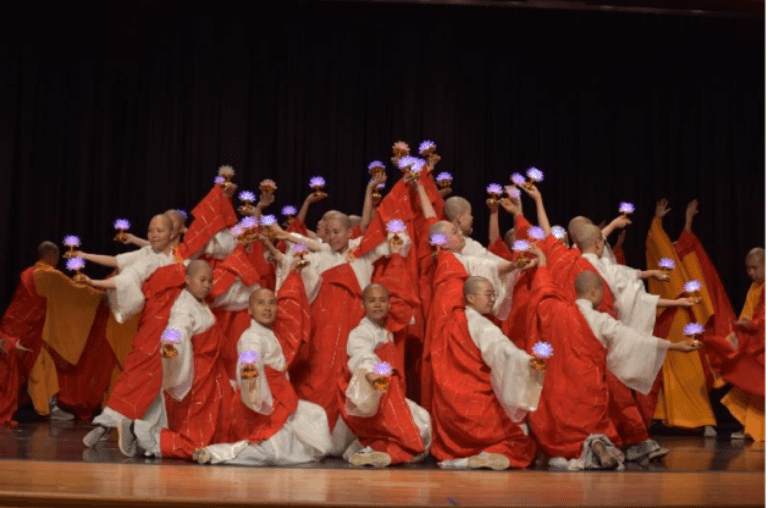
At the end of June, 2023, he will visit the United States for exchange performances. As ambassadors of Zen culture and art exchanges, they use their beliefs to promote goodness, use their art to enlighten the mind and purify the soul, and advocate the sublime realm of harmonious coexistence and a peaceful world!
During their one-month stay in the U.S., the troupe traveled to Los Angeles, Salt Lake City, and Edward Pocatello to begin their American music practice and Dharma propagation path. In September 2024, the troupe will continue to tour European countries, bringing the purest and most harmonious sounds to the world.
